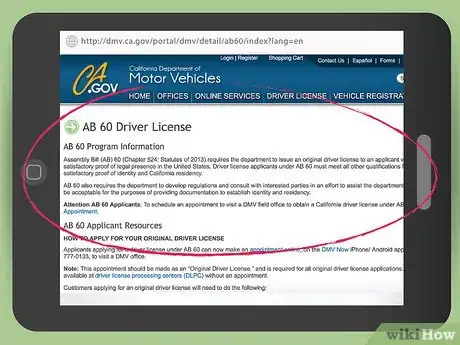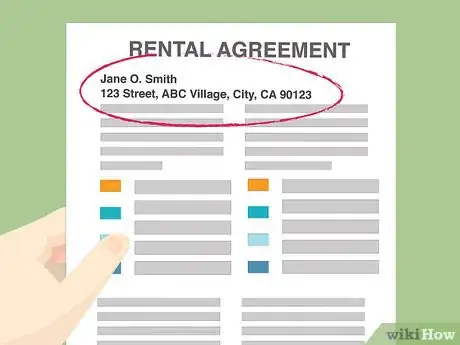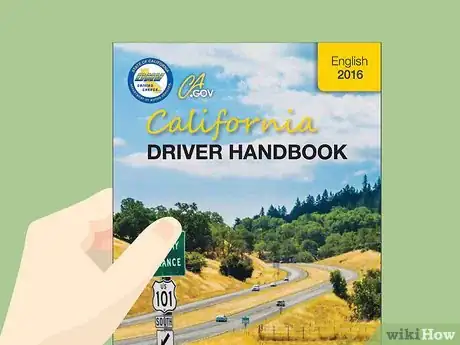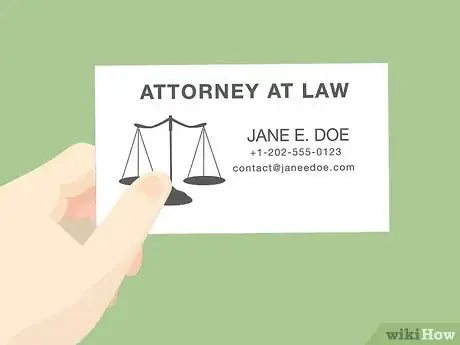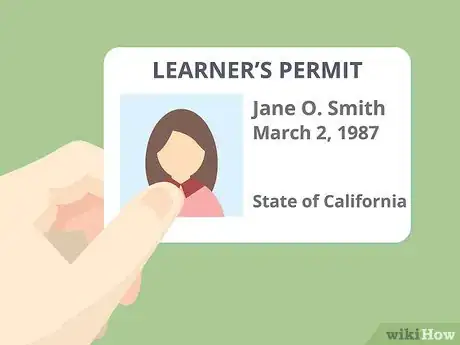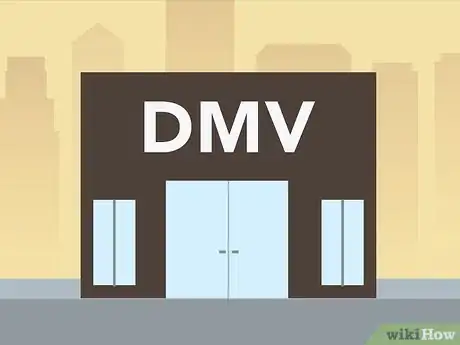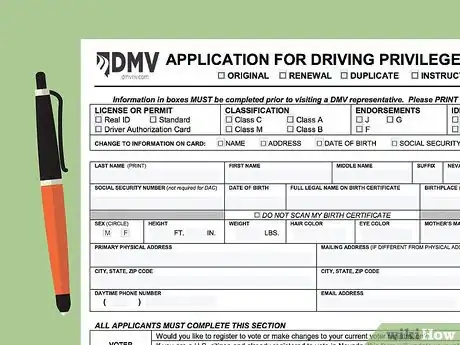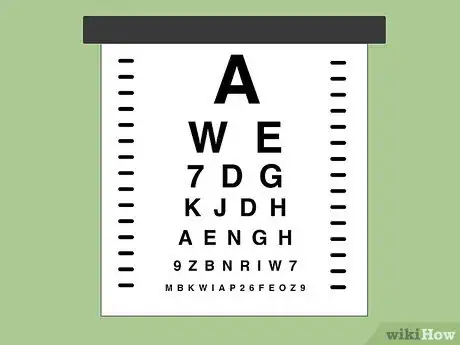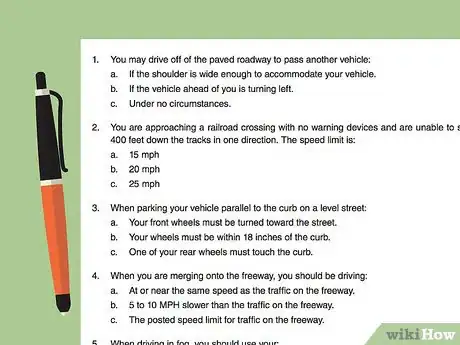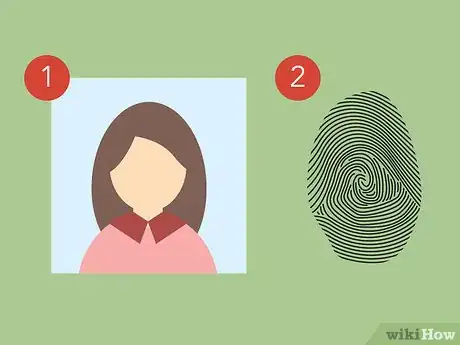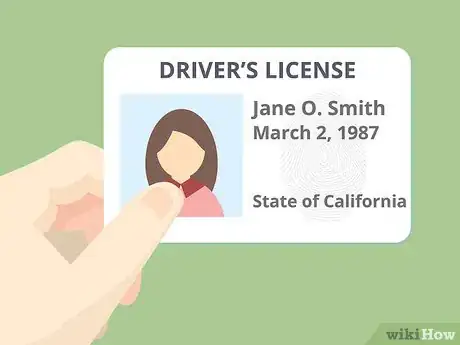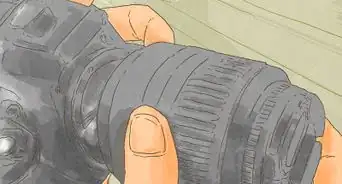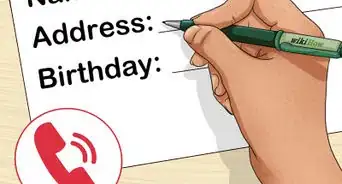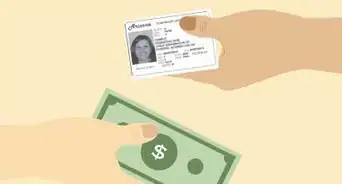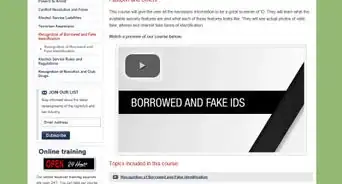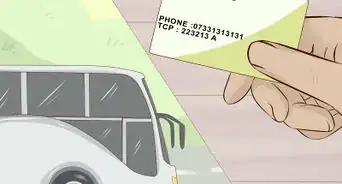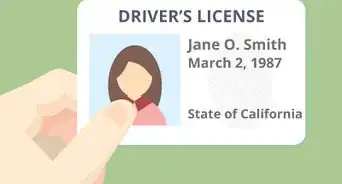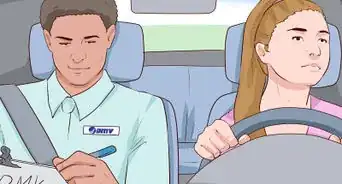This article was co-authored by Clinton M. Sandvick, JD, PhD. Clinton M. Sandvick worked as a civil litigator in California for over 7 years. He received his JD from the University of Wisconsin-Madison in 1998 and his PhD in American History from the University of Oregon in 2013.
There are 13 references cited in this article, which can be found at the bottom of the page.
This article has been viewed 42,057 times.
As of May 2022, sixteen states and the District of Columbia allow immigrants who are unable to provide social security to get a modified driver’s license. These states include California, Colorado, Connecticut, Delaware, Hawaii, Illinois, Maryland, Massachusetts, Virginia, New York, New Jersey, New Mexico, Nevada, Utah, Vermont, Oregon, and Washington.[1] However, undocumented immigrants may only apply for an automobile or motorcycle driver license. They are not eligible to get a commercial driver's license (CDL) which is required to drive large and heavy vehicles, or to transport passengers and/or hazardous materials.
Steps
Preparing to Apply
-
1Locate your state requirements. Each state issues its own driver’s license. Accordingly, the requirements for each state may differ slightly. To find out your specific requirements, locate your state’s Department of Motor Vehicles (DMV) website, which should have a list of requirements.
- To find your state’s DMV, type “DMV” and your state into a search engine. Then find the requirements for a driver’s license.
- Pay attention only to your state’s requirements.
-
2Gather proof of state residency and identity. Most states will require that you show that you have lived in the state for a specific amount of time. This proof can be in the form of rental or lease agreements, mortgage bills, employment documents, school records, etc. You may need multiple documents that prove residency.[2] You may also be required to show:
- you have a valid passport or consular identification, or some other document that establishes identity.
- inability to get a Social Security Number. You may need a letter from the Social Security Administration stating that you do not qualify for a SSN.
- proof of insurance. States may require proof of insurance before you can get a license.
Advertisement -
3Study for the knowledge test. You will be tested on driving rules and state laws related to driving. To prepare for the test, you should download any Driver Handbook that the state has on its website. Read through it and take notes.
- Some states also have sample tests you can take. You should take a practice test and study the correct answers before going to the DMV.
-
4Meet with an attorney. Depending on your situation, you may want to talk to a lawyer before seeking your new driver’s license. For example, you may already have a license obtained using forged or fraudulent documents. Also, you may have stolen someone’s Social Security Number to get a license. It’s not clear whether states will prosecute you if you step forward.
- For example, the California DMV has stated that it will not forward past cases of fraud to obtain a driver’s license so long as you do not have any other criminal activity. However, lawyers recommend caution.[3]
- You should also review your criminal history. If you have convictions for felonies or serious misdemeanors, or if you re-entered the country after being deported, then ICE (Immigration and Customs Enforcement) could be looking for you.[4]
- If you can’t afford an attorney, then try to contact a legal aid organization near where you live by using this Locator. Legal aid organizations provide free or reduced-fee legal services to those in financial need.
-
5Get a driver’s permit, if required. Some states may require that you first get a driver’s permit. Connecticut requires unauthorized immigrants to first secure a driver’s permit by passing a knowledge test.[5]
- If you pass the vision and knowledge test, then the Connecticut DMV will mail you the permit.[6]
- Depending on your age, you will have to satisfy driver’s requirements. For those age 16 and 17, you must have at least 22 hours of classroom training plus an eight-hour Safe Driving Practices course at a commercial or secondary driving school. Then you need an additional 40 hours of practice driving.[7]
- For those aged 18 or older, you will need to take the eight-hour Safe Driving Practices course.[8]
Applying for the License
-
1Visit the DMV. Find your nearest DMV by visiting your state’s website, which should have a list of facilities where you can apply. The website should also list the hours in which they are open.
-
2Complete an application. You will need to fill out an application when you arrive at the DMV. Some states may make their applications available online, in PDF format. If so, you can download it and then fill it out before going to the DMV.
- Nevada’s application is available online here. You would check that you are applying for a “Driver Authorization Card.”
-
3Take a vision test. Vision tests are a standard prerequisite to getting a driver’s license. Typically, states require that your vision be 20 over 40 or better to gain full driving privileges. If your vision is worse, you may be denied a license or have driving restrictions imposed (such as no night driving).
- If you wear glasses, you can wear them for the exam. However, if you need to use glasses or contact lenses to pass the exam, a notation will be made on your license.[10]
-
4Pass the written test. The test requirements will vary by state. But you will probably need to identify common traffic signals and answer questions about driver liability and driving rules.
- In Nevada, the written test is made up of 50 multiple-choice questions. You must have a score of 80 or better to pass the knowledge test. The test is offered in both English and Spanish.[11]
-
5Take a road test. States will require that you pass a road test in order to get a license. You must have insurance on the car and it must be registered. The driving test itself will vary depending on the state and the instructor, but you should plan on the test covering the following: [12]
- Finding and using the car’s controls: accelerator, signals, brake, horn, etc.
- Adjusting the seat, mirror, and seat belts properly
- Releasing the brake
- Checking over your shoulder that the way is clear
- Using turn signals properly
- Ability to make turns
- Stopping the vehicle and backing it up properly
- Parking on a hill
- Obey traffic signals
- Follow the speed limit and obey lane markings
- Your overall safety, including your awareness of traffic around you
-
6Pay the fee. Each state charges a fee, which varies depending on the state. Check with the DMV ahead of time to find out the fee and acceptable methods of payment.
-
7Have your picture taken. You will need to sit and have your picture taken in order to get a license. Your photo must appear on the license itself.
- Washington uses facial recognition technology for its pictures, which requires that you remove anything covering your face or head. Exceptions will be made for medical or religious reasons.[16]
- You may also need to provide a thumbprint.
-
8Receive your license. You may not receive your license immediately. Instead, the Secretary of State may need time to check your immigration status before issuing the license.
References
- ↑ http://www.ncsl.org/research/immigration/states-offering-driver-s-licenses-to-immigrants.aspx
- ↑ http://www.scholnicklaw.com/2015/02/applying-for-a-drivers-license-for-undocumented-immigrants-in-maryland/
- ↑ http://driveca.org/bill-ab60/
- ↑ http://driveca.org/bill-ab60/
- ↑ http://www.ct.gov/dmv/cwp/view.asp?a=805&q=547214
- ↑ http://www.ct.gov/dmv/cwp/view.asp?a=805&q=547214
- ↑ http://www.ct.gov/dmv/cwp/view.asp?a=805&q=424244
- ↑ http://www.ct.gov/dmv/cwp/view.asp?a=805&q=514962
- ↑ http://www.illinoislegalaid.org/index.cfm?fuseaction=home.dsp_content&contentID=8425
- ↑ http://www.dmvnv.com/dltesting.htm
- ↑ http://www.dmvnv.com/dltesting.htm
- ↑ http://www.ct.gov/dmv/cwp/view.asp?a=805&q=469194
- ↑ http://www.dmv.org/co-colorado/undocumented-resident-license.php#Forms
- ↑ http://www.ct.gov/dmv/cwp/view.asp?a=805&q=469194
- ↑ http://www.ct.gov/dmv/cwp/view.asp?a=805&Q=285308&PM=1
- ↑ http://www.dol.wa.gov/driverslicense/idproof.html
About This Article
Several states now allow illegal immigrants to get a driver’s license as long as they can present the necessary paperwork to the appropriate government office. To find out your state’s specific requirements, look at your state’s Department of Motor Vehicles website. Most states will require you to show that you’ve lived there for a specific amount of time, so you may need a rental or lease agreement, mortgage bills, employment documents, or school records. You’ll also likely need a valid passport or other documents that establish identity as well as a letter from the Social Security Administration stating that you don’t qualify for a social security number. In addition to documentation, you’ll also need to study for and pass the knowledge test, take the driving test, and fill out an application. To learn how to pay for and receive your license, keep reading!
